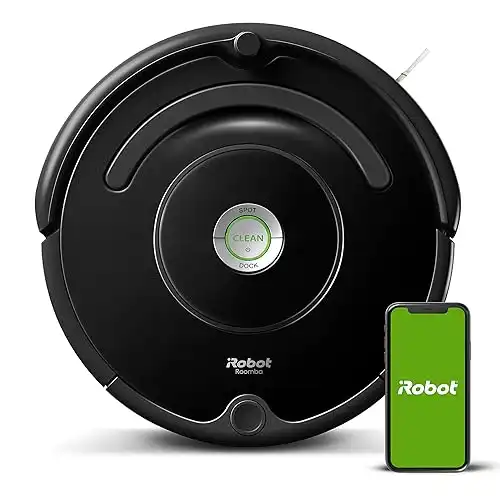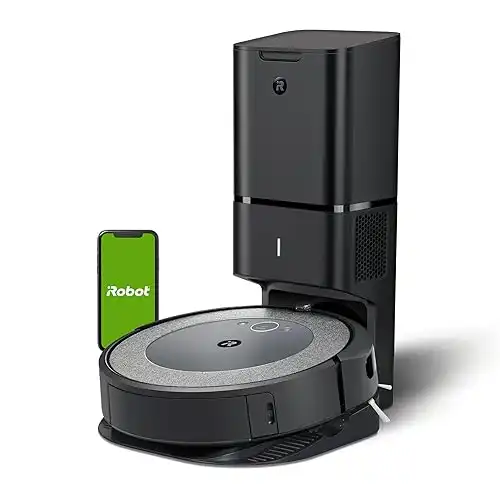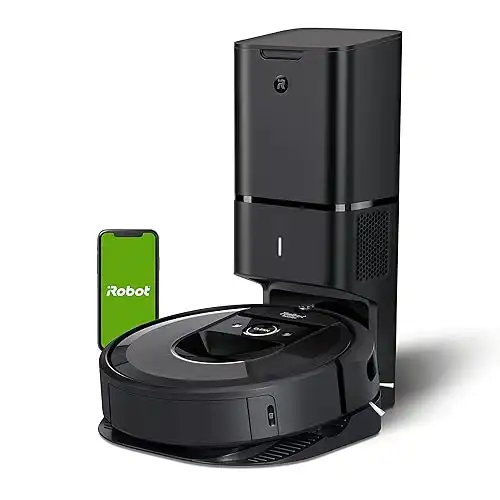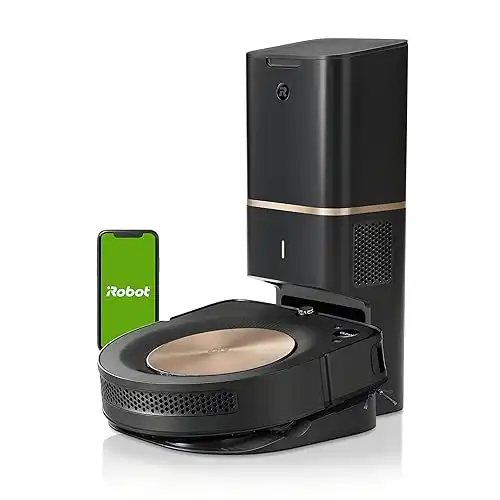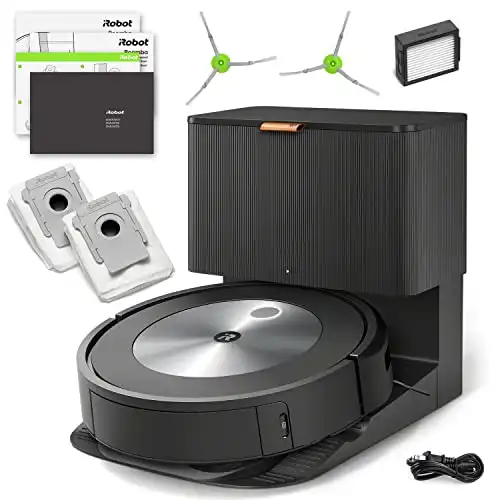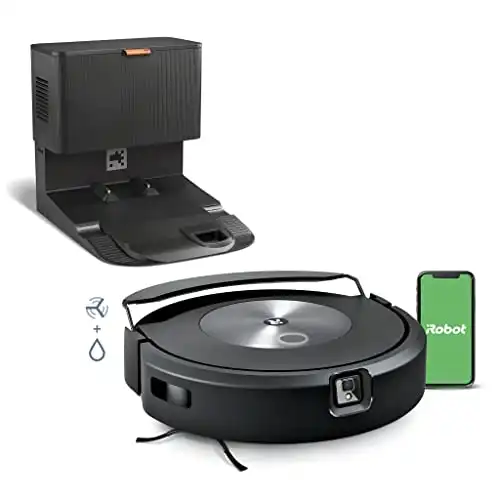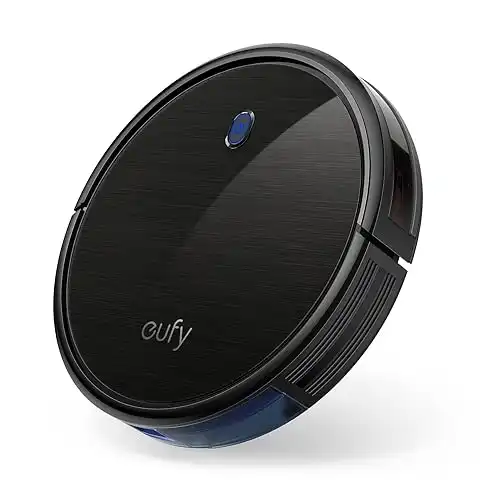The robot vacuum was the first “smart home” device that had mainstream appeal. iRobot sold the first robot vacuum nearly 20 years ago if you can believe it! Since then, well over 30 million home robots have been sold, with the best robot vacuums for pets capable of maintaining your floors independently, even emptying themselves, thanks to automatic dirt disposal.
These days, you can get an affordable robot vacuum for not much more than you’d pay for a mid to high-end upright vacuum. That’s much different from years ago when most sold for hundreds of dollars (if not more). And with continuing advancements in cleaning technology, they clean better than ever, with better suction power — great for pet hair and dander.
We’ve owned and had the opportunity to test robot vacuums ourselves over the past two decades from various manufacturers and can say with authority that they’ve gotten much better. Better navigation systems allow your robot vacuum to clean much more effectively (and slam into objects much less). Improved suction technology and cleaning power clean carpets and hardwood floors more thoroughly.
With new smart home capabilities, you can use Alexa and Google Assistant for voice control, and app control is another common feature in more advanced robot vacuum cleaners.
Traditional vacuums vs. Robot vacuums
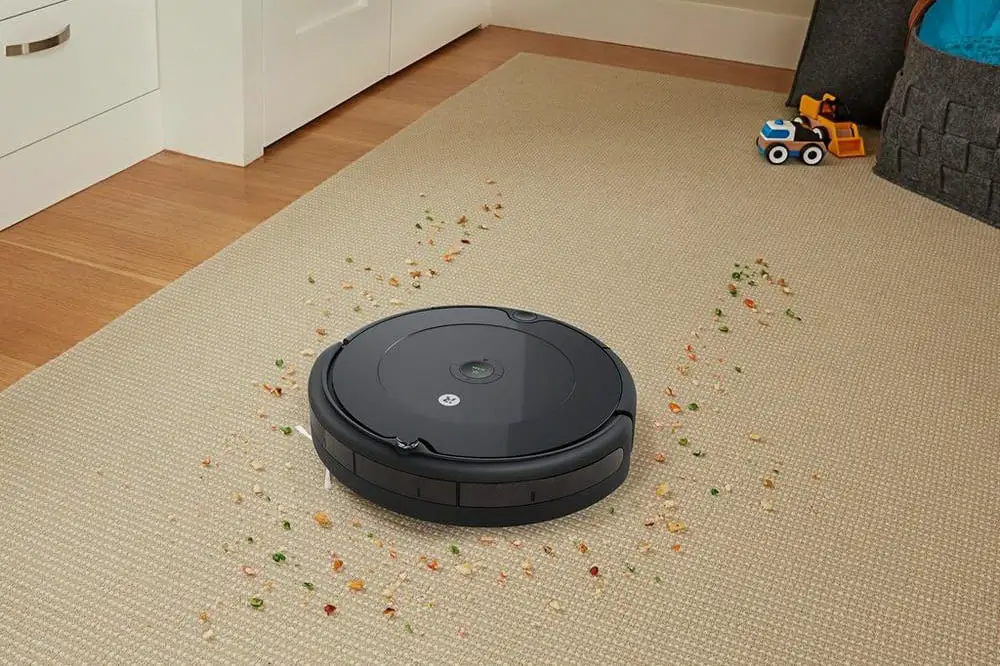
A traditional vacuum uses spinning brushes, often leaving dirt in corners behind. Robot vacuums use multiple sensors to detect walls and objects, meaning there’s no risk of missing or leaving dirt behind. Another significant difference between traditional vacuums and robot vacuums is the bin size. Traditional vacuums have larger bins, which means you have to empty them often, whereas robot vacuums have smaller bins that are easy to remove and clean.
You can use robot vacuums on hard floors like wood, linoleum, and low to medium-pile carpets. However, please avoid using it on high pile, plush, or shag-type carpets as these are more likely to tangle in the brushes of the robot vacuum.
Best Robot Vacuums for Pets
While the iRobot Roomba i7+ and s9+ series are some of the best robot vacuums on the market, we think the iRobot Roomba i3+ or the iRobot Roomba j7+ are the best values. The Roomba i3+ lacks the targeted room cleaning technology of the i7+ and j7+, and the learning capabilities of the s9+. However, it still features the self-emptying base of the higher-end models and the ability to vacuum carpets in straight lines, reducing overall cleaning session time.
However, if you’re looking for more automated cleaning, the i7+ is the better choice. In addition to scheduling when to clean, you can also schedule where to clean. This is thanks to the “smart mapping” technology within the device, which allows it to map out and remember which room it’s in. The result is a more optimized clean every time, beating out more affordable robot vacuums in cleaning performance in our carpet cleaning test.
The Roomba j7 series is iRobot’s next-generation self-emptying robot vacuum. New in this generation is the ability to clean around objects and even pet waste. The dustbin is a little smaller in the J series robots, which makes it a little easier to find a place for it, and iRobot sells a version of the J7 with an integrated mop pad to both mop and vacuum your floors.
Not everybody needs the extra bells and whistles of the iSeries Roombas — so the iRobot Roomba 675 is an affordable alternative and the best robot vacuum for those on a budget. We’ve owned an iRobot Roomba 600 series for several years and haven’t had any issues. While the navigation isn’t as advanced, and the vacuum uses an “adaptive” (random) pattern to cover your floors, it still does a pretty good job overall.
eufy’s RoboVac 11S is also one of the best robot vacuums available for those on a budget. Its thin design helps it fit under low furniture easier, and its slightly longer runtime than the Roomba 675 makes it a great alternative (and those we’ve talked to with RoboVacs are quite happy with their purchases.) The Cliff’s Notes? This budget robot vacuum consistently scores high in our tests and tests from many other reviewers across the web.
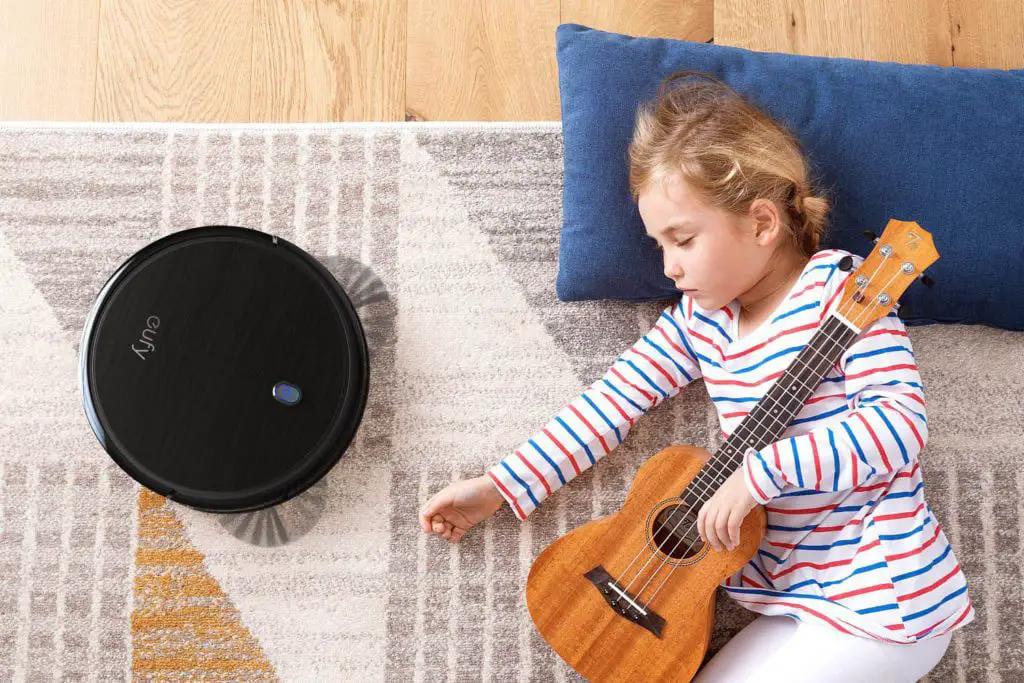
How do robot vacuums work?
Robot vacuums feature an array of sensors to help them navigate your home, as well as ensure it is cleaning floors effectively and efficiently. Sensors on the bottom of the device detect dirt and debris, and if necessary, instruct the robot vacuum to stop and focus on a specific area until it’s spotless. Another sensor located on the bottom of the device is the fall sensor, which prevents the vacuum from falling off a ledge or step.
In addition to the sensors on the bottom of the robot vacuums, sensors on the top help it navigate through your home and around obstructions. An “eye” at the front of the device scans the surroundings for obstacles. While most use a stereoscopic camera and bumper sensors to help the robot vacuum find its way, the best robot vacuums use lasers and even LIDAR.
Lasers are used on robot vacuums to locate dirt or debris whicthat be loose on your floor. The device will first project a laser beam onto the floor before forming an image of the area and sending it back to its CPU for processing. The robot vacuum will then adjust the height of its brush rollers and start vacuuming, which helps your robotic vacuum clean floors more efficiently.
Lasers and LIDAR also allow the vacuum to map out the room, which helps it work quicker and more efficiently. Higher-end models can also store this information, allowing it to cover multiple rooms and find the most efficient way to get there and back from the charging station.
Robot vacuums can handle a variety of types of rugs and even hardwood floors. On higher-end models, the suction capabilities are often on par with most upright vacuums — and in some ways better, thanks to its dirt detection capabilities.
Most offer some companion apps and offer smart home connectivity. You can schedule cleanings from the app or ask Alexa or Google Assistant to start your robot vacuum. Some models provide IFTTT support, allowing you to connect it to other smart home devices.
How to choose the best robot vacuum for you
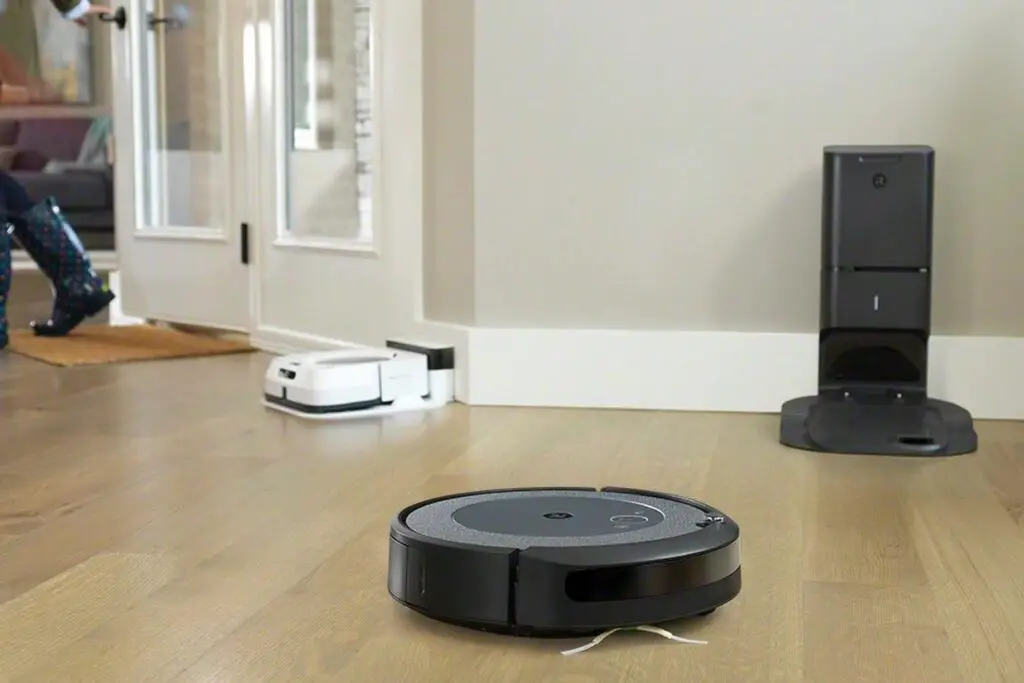
All robotic vacuums are not created equal, and there is a wide range of models from which to choose. Before deciding on a particular model you will need to set a budget. You also need to consider other factors such as the size of your home and where you plan on using it or if you have any pets. Some robotic vacuums are better at picking up pet hair and dander than others.
If you have allergies, a robotic vacuum cleaner will help reduce those symptoms and keep your home cleaner. This is an investment that will pay off greatly in the end once you start to see how much dirt and debris has collected on your hardwood flooring, carpet, or rugs.
Features to look for
- Self-emptying technology: A fairly new feature, the auto-empty station is typically a part of the charging dock. This is a great feature for those suffering from allergies, as pet hair and other allergens are sealed away in the auto-empty station, instead of getting back into the air when you open the robotic vacuum’s dustbin up to clean it yourself.
- Wi-Fi connectivity and a smartphone app: We’ve had both Wi-Fi connected and standalone robotic vacuums, and can say that having control over the vacuum cleaner is a must-have. Be ready to spend a little bit more, as these features are more commonly found on the more advanced robot vacuums, which typically cost upwards of $500 or more.
- Solid mapping capabilities: Some robot vacuums can map out your home using sensors, and allow you to set up virtual no-go zones to keep the vacuum out of specific rooms or areas, such as the stairs. we’ve found the higher-end iRobot Roombas to do the best in this regard — even allowing you to map out different floors in your home, and automatically knowing where it’s at without you having to do anything.
- Scheduling: Many robot vacuums come with this feature. This is quite a common feature for robot vacuums. By connecting with your smartphone, you can schedule when you want your home to be cleaned, be it daily, weekly, or when you’re not at home. Premium models will take this a step further, automatically adjusting the cleaning schedule to clean while you’re not at home, or it senses more dirt on the surfaces it cleans.
- Remote control: Entry-level robot vacuum cleaners come with a remote control rather than Wi-Fi connectivity. It doesn’t give you as many options, but you can still control it hands-free using this.
- Battery life: The right robotic vacuum will be able to keep your house clean and dirt-free. It might even do it on its own if you invest in one with a self-charging base! If the model of robot vacuums that interest you requires an outlet or needs charging every few hours then make sure this isn’t something important before buying one – there are plenty where these features come standard.
- Edge Cleaning: Be sure to read reviews on the edge cleaning capabilities of your robotic vacuum. The circular shape of the robot does make it difficult to get it into tight spots, although some models feature a flat edge to allow the robotic vacuum to clean all the way to the edge.
Frequently Asked Questions
Here are some frequently asked questions on robot vacuums that are frequently asked by readers.
Before you start your robot vacuum, make sure it’s fully charged. This ensures maximum battery life before needing a recharge. There is typically an indicator on the top of the device to indicate when the robot vacuum is fully charged. When cleaning dull or dusty floors, we recommend running your robot vacuum without additional side brushes to maximize suction (if you can remove them). If your floor is filthy, you may want to run your robot vacuum with the side brush for deep cleaning.
Robot vacuums come equipped with washable filters that you can rinse under running water or shake out to remove all dirt and grime, while others clean themselves at an auto empty station at the end of a cleaning cycle. Before cleaning your robot vacuum, please make sure that your robot vacuum is powered off. You should periodically remove human, and dog hair and strings from the brush as this may cause brushes to stop rotating correctly. For deeper cleaning instructions, please refer to your product manual.
Most robot vacuums are quiet during operation, but they produce a low humming sound similar to a PC running in the background.
Each robot vacuum has different battery life, so please refer to your user manual to determine how long your robot vacuum will last. We have found that most models run about 30-60 minutes before returning to their charging dock for a recharge.
Dust compartments of some robot vacuums are small, so you will need to empty the dust compartment before it begins cleaning. Please refer to your product manual for more information.
Yes, these cables can get tangled in the brushes of your robot vacuum. If your robot vacuum uses boundary markers, ensure the cord is located outside this area.
The best robot vacuums work just as well as traditional upright vacuum cleaners. Depending on the amount of dirt in your home, it may take a few days for one of these vacuums to clean every square inch. Be patient early on.
Robot vacuums usually require little maintenance or effort on your part. Most vacuums are set to run for about an hour after the initial charge. When finished, they will return to their docking station to recharge and, if necessary, head back out to continue cleaning.
We’ve had no problems with ours and have gotten great results on bare floors and thick carpeting without too many issues. But where they excel is in the fact that they can get where your upright vacuum probably can’t. They get in the spaces where dirt likes to hide, and they can go under beds, sofas, chairs, and other furniture.
Wrapping Up
The robot vacuum has made one of the most dreaded household chores a breeze. The best thing about today’s robot vacs is that suction power and battery life have both improved, and it doesn’t cost nearly as much to buy a good robot vacuum as it did even five years ago. If you think we’re hyping the robotic vacuum cleaner as one of the best smart home gadgets, you’d be right.
Now that we have ours, we’re never going back to vacuuming our floors again.
